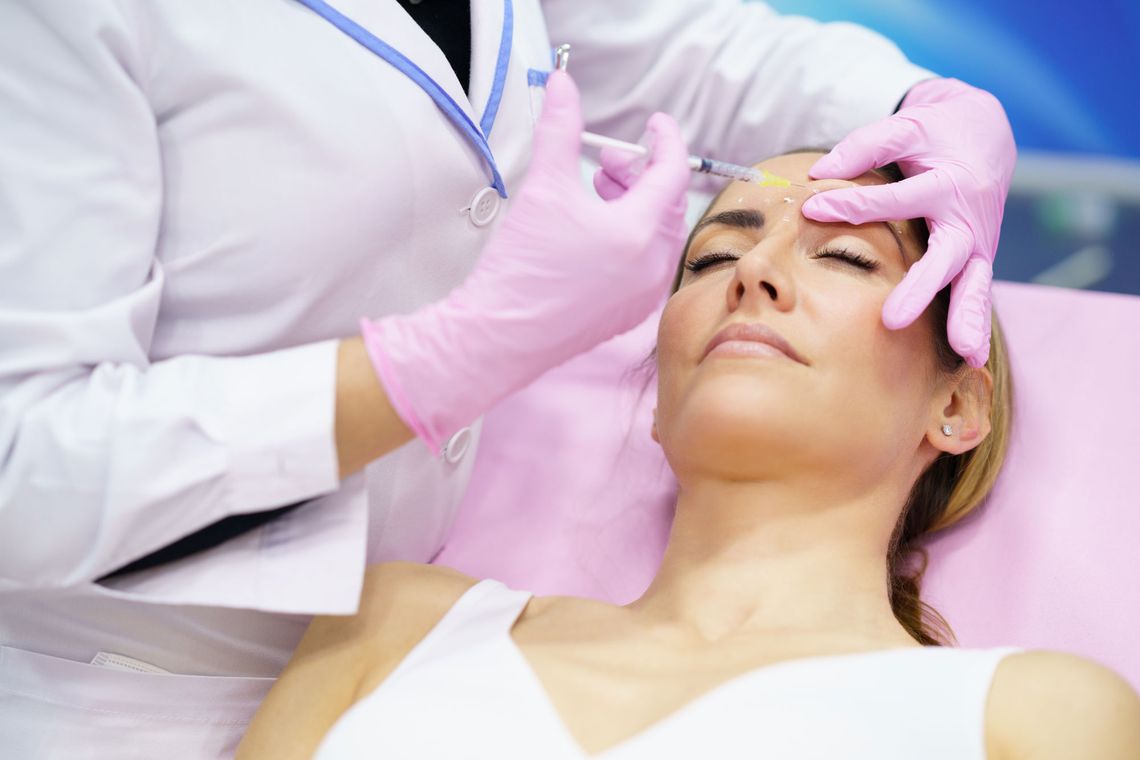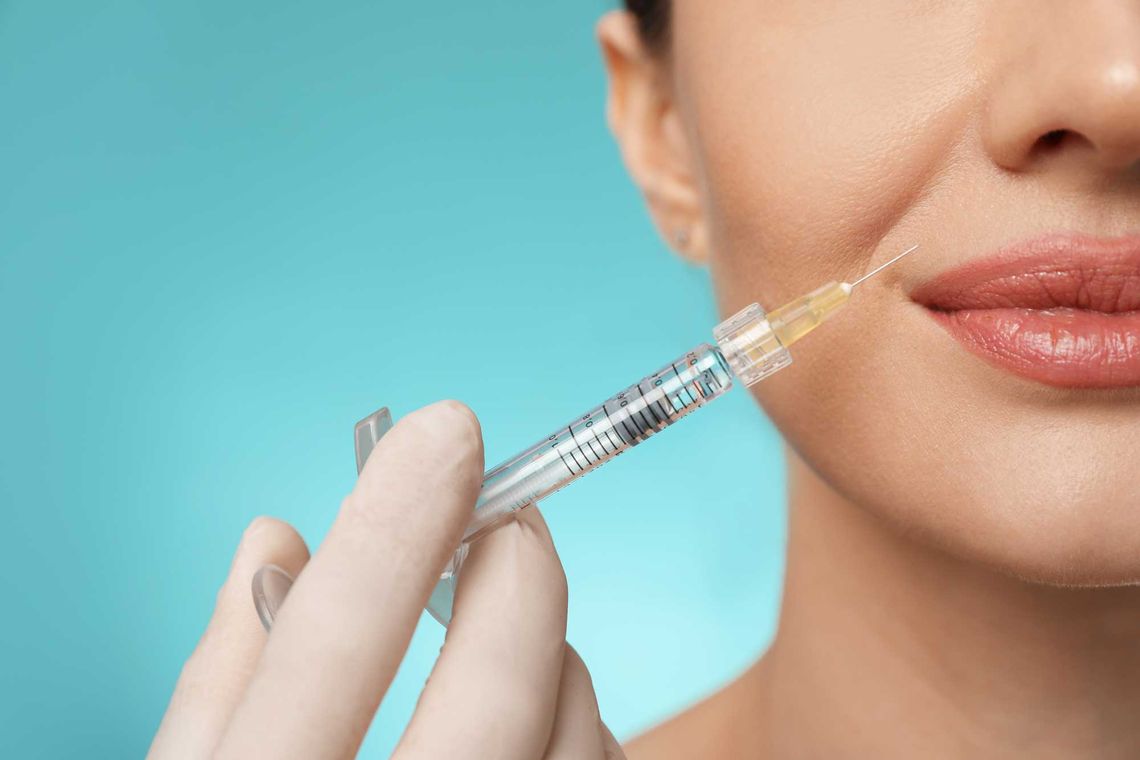While statistics show that German men favour liposuction, wrinkle injections are the most popular cosmetic surgery among German women. The number of plastic surgeries performed worldwide is increasing, and at the same time there are changes in the legal framework.
Against this background, we conducted an interview with Dr. Bleßmann-Gurk to shed some light on the topic of aesthetic dermatology.
- Category
- Date
- Share
Interviewer: So maybe the first question is where is the line between cosmetic treatments, as a general term, and cosmetic dermatology?
Dr. Bleßmann-Gurk: Cosmetic treatment is what the cosmetician does - it's cleaning and exfoliating the skin with various methods, such as dermal abrasion, with various devices, or acids. Cosmetic dermatology starts where the needle comes in; it's minimally invasive but invasive nonetheless. There are grey areas!
Interviewer: And what are the most common aesthetic treatments and complaints?
Dr. Bleßmann-Gurk: The most common treatments are Botulinum toxin and filler treatments. There are various treatments, such as threads, micro-focused ultrasound, lasers for resurfacing and reaching deeper layers, and micro-needling with radiofrequency to strengthen the skin. Surgical interventions are also an option. There are many different reasons for facial ageing, and we have to address every layer. Younger patients do complain about glabellar lines, wrinkles on their forehead, and crow's feet around their eyes, which are the main regions for one of the many Botulinum toxin treatments. Complaints about jowls and drooping jawlines are quite common in people over forty.
Interviewer: Okay, so focusing for a moment on the two most common treatments, when do you choose fillers, and when do you choose Botulinum toxin treatments?
Dr. Bleßmann-Gurk: Botulinum toxin treatments can modulate your muscle activity, so you can weaken a very strong muscle, such as the one in the glabellar. If you weaken the muscle, the skin is not pressed to the end, and the fold start to become less visible. Fillers, on the other hand, are filling agents that fill the folds where the volume has been lost over time. Example indications are cheeks, nasolabial folds, lips and marionette lines.
Interviewer: What are fillers?
Dr. Bleßmann-Gurk: Dermal Fillers are classified as medical devices because their physical mode of action is to fill gaps or give volume. The main substance used in fillers today is hyaluronic acid, and every company is using their own technologies to develop hyaluronic acid fillers with different cross-linking methods. Other filling agents include calcium hydroxylapatite, which in a diluted form is also used to strengthen the skin. Another filler is one's own fat, which can be removed with liposuction and used as a filler.
Interviewer: Back in the day, dermal fillers were linked with adverse reactions. Was that just media hype or a real issue? How have things changed with the fillers on the market today?
Dr. Bleßmann-Gurk: There has been a clear learning curve when it comes to filler development and clinical injection techniques. Adverse reactions like granulomas, infections, and displacement of fillers gave unwanted permanent results. Nowadays, the fillers on the market are semi-permanent, the results are expected to last a maximum around two to three years, mostly shorter, also depending on the volume used.
Interviewer: So you have to refresh the treatment every two years?
Dr. Bleßmann-Gurk: Yes, but this allows for adapting the treatment to the face as it is. The duration of a filler also depends on its location and degree of crosslinking. For example, fillers under the eyes may last longer than two years due to minimal motility. In contrast, fillers in areas with high motility, like the lips, do not last as long due to the breaking of cross-links holding hyaluronic acid chains together by movement.
Interviewer: Can you break these cross-links on purpose to speed up the degradation if you are unhappy with the results?
Dr. Bleßmann-Gurk: Yes. Hyaluronidase, an enzyme naturally occurring in the body, can be injected to break down hyaluronic acid fillers.
Interviewer: You mentioned that fillers are now classified as medical devices. Have the regulations for fillers changed recently?
Dr. Bleßmann-Gurk: Yes, the classification of fillers under the new Medical Devices Regulation (MDR) is partly due to a major scandal with breast implants that had far-reaching consequences. The focus on product safety under the new MDR is stricter than before.
Interviewer: So today's fillers should be much safer due to the new MDR?
Dr. Bleßmann-Gurk: Yes, the new MDR is an ongoing process. Companies with products on the market will need to conduct additional studies to provide the required safety data in order to keep their CE mark.
Interviewer: What types of studies are now required for fillers?
Dr. Bleßmann-Gurk: For those that already have a CE mark, there are Post-Market Clinical Follow-up (PMCF) studies. However, the notified body would like to see more data. Additionally, clinical trials are required to obtain CE marks for new products. If a company wants to add indications for which their product can be used, they must perform additional studies.
Interviewer: What is important for clinical trial design for fillers? Which variables could affect the results of a filler treatment?
Dr. Bleßmann-Gurk: Inclusion and exclusion criteria are crucial to finding patients with the folds and wrinkles that profit most from the filler treatment. It's important to have the correct scale in place for determining the outcome. A scale for measuring the severity of the fold is usually used. Patients' folds are assessed using photometric rating scales before and after the filler is injected. A one or two-point improvement is expected, and the more points the scale has, the easier it is to reach a one-point improvement.
Interviewer: Do you also use subjective assessments?
Dr. Bleßmann-Gurk: Yes, patient reported outcomes (PROs). In recent years, the FDA has been asking for the patient experience to be reported. The Global Aesthetic Improvement Scale (GAIS) is used in many trials. This is carried out by both. the subject and the investigator (SGAIS and IGAIS respectively). There are more PROs and in every trial design careful selection is crucial. But the use of photos cannot be overlooked. Clinical photography is a big topic. High-quality 2D photos, not only frontal but 45 degree and 90 degree from both sides, are usually taken at the main assessment visits where changes can be seen. And of course, 3D photography combined with AI software is used, too. This way, the fold volume at the injection site can be directly measured. AI is a big development in the field, not just in classic dermatology like melanoma detection, but also in the aesthetic area where redness, brown spots, pore size, and shaping of the whole face can be visualized.

Interviewer: Indeed! It's interesting to validate these methods because the AI tech market is exploding right now. So, we talked about the face; is there anything else that you can use fillers for?
Dr. Bleßmann-Gurk: Fillers are used on the whole body. But if you're asking where it's mainly used, I would say if people get rid of their folds and skin problems in their face, they're very satisfied. Then they detect that there are other areas like "oh my forearms, my hands," or "look at my neck, my décolletage!" But I feel like filler treatment in the hands is really something very known and common. It's been approved by the FDA for more than 10 years.
Interviewer: Do you see any future trends in aesthetic dermatology in general?
Dr. Bleßmann-Gurk: Enhancement of skin quality is a hot topic because it's about the whole impression, not only single folds. If you have an aged face, these things can make it look old or even older than it is. First of all, pigmentation issues; brown spots, visible vessels resulting in redness and red spots. With a dyschromia like this, it is not good for the overall impression and can make you look older. Flawless skin is a human desire, regardless of cultural background. The second is the surface. With many folds there are lots of light and shadow reflections, which is not what you want you need flat surfaces and round shapes to really reflect the light. So, the skin surface is very important. And the last thing is skin laxity. And for these different entities, there are different treatment modalities. Therefore, the first consultation with a patient is all about finding out what is the main concern and where do we have to start.
Expert

Dr. Birgit Bleßmann-Gurk
Dermatologist





